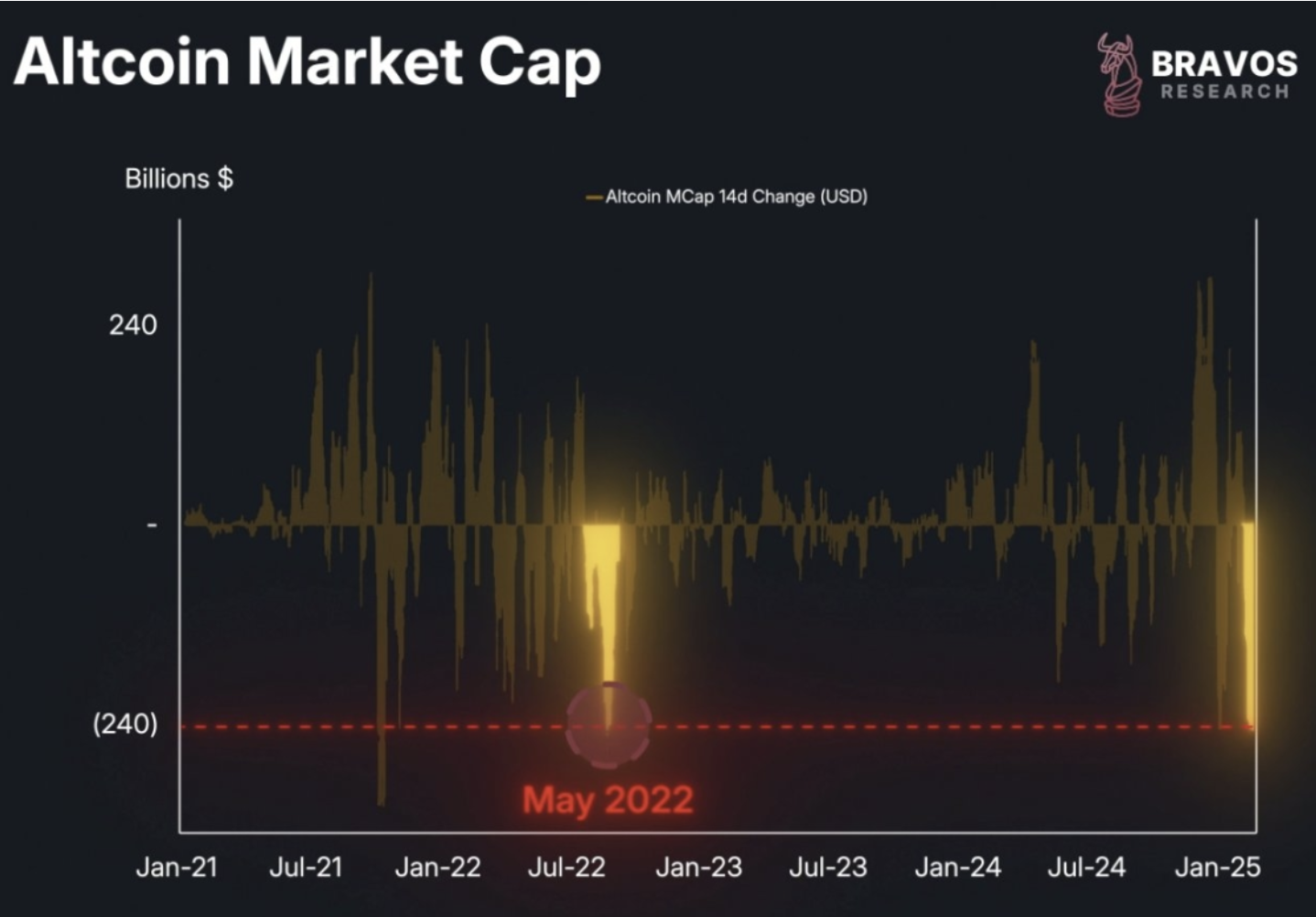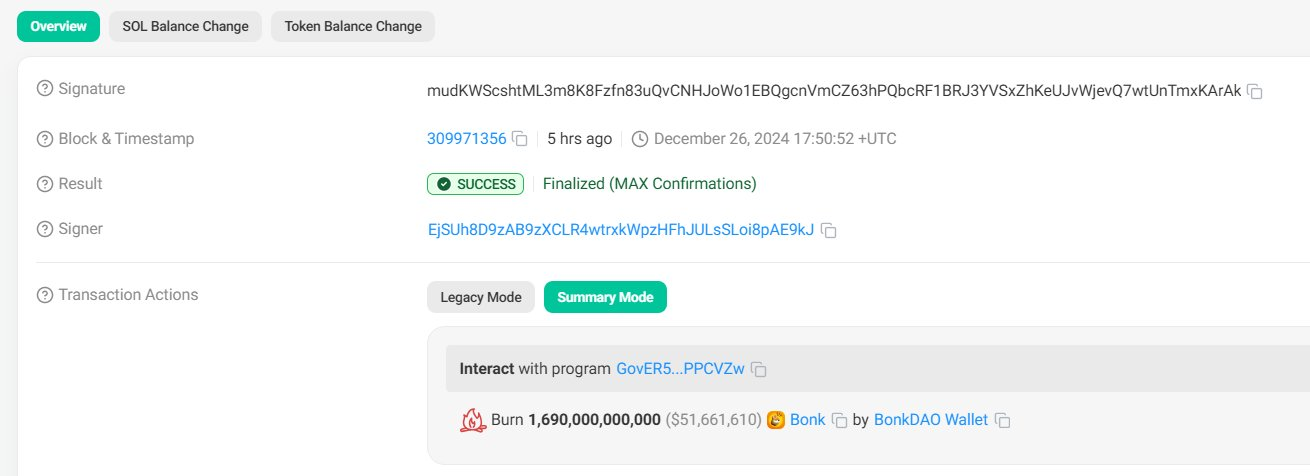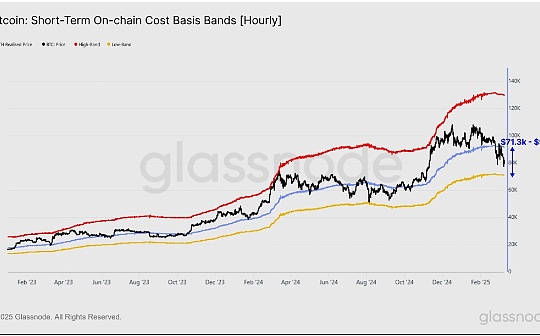The crypto market has declined across the board. How can the deflationary narrative increase the value of tokens?

Reprinted from panewslab
03/12/2025·1MIn a high volatile market environment, the value of token economics is gradually emerging.
Written by: 0xResearcher
A few days ago, the first White House crypto summit came to an end, and the impact it had just begun...
BTC price fell below $80,000. The crypto market faces the largest liquidation since the LUNA crash. Investors' sensitivity to risks has increased significantly, and funds have accelerated their flow to projects with anti-decline attributes. At the same time, investors' scrutiny of the token economic model is becoming increasingly strict, and a key question arises: Is there a token model that can withstand market volatility and travel through the bull and bear cycle?

Source: Bravos Research
The temptation and cost of inflation
It is no accident that most tokens choose inflation models. Through additional issuance, developers, communities and early investors are rewarded to quickly launch the ecosystem. However, when market sentiment is sluggish, the inflation of circulation and the shrinking demand are likely to cause prices to enter a downward spiral. Ethereum is a classic example. The total supply was not set in its early design, which led to long-term inflation problems and caused users' anxiety. It was not until the EIP-1559 proposal introduced the destruction mechanism that the selling pressure was effectively alleviated, which had a profound impact on Ethereum's economic model and its market performance.
But the question is: If inflation is the fuel to start the ecosystem, can deflation become the brakes of the confrontation cycle?
The scarcity logic of deflation
In sharp contrast to Ethereum’s struggles is Bitcoin’s four-year halving cycle. After each halving, the output rate of the new currency is halved, and scarcity pushes the price into an upward channel - this mechanism has allowed Bitcoin to maintain its deflationary attributes after many bear markets, becoming the only "digital gold" in the crypto market that has spanned the cycle.
This logic is being learned from more projects. For example, the Solana ecosystem, which is popular in this round of cycles, the SIMD-0228 proposal voting launched by token SOL is trying to balance ecological incentives and value storage by dynamically adjusting the inflation rate. The proposal was proposed by Tushar Jain of Multicoin Capital and others. The core mechanism is: when the SOL staking rate exceeds 50%, it reduces issuance to suppress inflation, and when it is below 50%, it increases issuance to incentivize staking. This "elastic inflation" design reveals a key principle - deflation is not a total negation of inflation, but a check and balance tool for dynamic game with it.

Source: SIMD-0228 Proposal
Even during a market downturn, the number of token holders in many projects has increased instead of decreasing. Perhaps this is the most effective proof of the deflationary token model in the face of a downward trend.

The triple value of deflation mechanism
In the current countercyclical environment, the value of the deflation mechanism is becoming increasingly prominent, and its breakthrough lies in three levels:
- First, scarcity premium. When the growth rate of circulation is lower than the growth rate of demand, the value of tokens will naturally rise.
- Secondly, the anti-inflation attribute. Under the impact of over-issuance of fiat currency and regulatory measures, deflationary tokens have become a safe haven for funds.
- Finally, community consensus is strengthened. Transparent destruction behavior for the community conveys the project party's long-term commitment and attracts value investors rather than short-term speculators.
However, to realize these values, specific tools are needed. The current mainstream deflation mechanism includes:
- Token destruction: It is to transfer some of the circulating tokens to the black hole address, such as BONK's daily destruction on the chain.
- Pledge lock-up: long-term holding is encouraged through income incentives, such as Solana's dynamic adjustment mechanism for pledge ratio SIMD-0228 proposal.
- Ecological consumption: It is to use tokens as Gas fees or collateral to form a positive cycle of destruction upon use.
Microscopic samples of deflation design
$BONK The currency price remained relatively stable during this fluctuation, and the author found that it has a multi-level deflation model. The core of this model is a transparent on-chain destruction mechanism, including automatic ecological interaction destruction, event-driven large-scale destruction, and continuous reduction of its own circulation in the entire volatile market to achieve a deflation economy. To a certain extent, it has achieved "following the rise but not falling"
The daily destruction mechanism connects to all Bonk's ecological applications, and the amount of destruction continues to increase. In addition, the BONK community will regularly launch event-driven large-scale destruction activities, such as the "BURNmas" program last December, destroying 1.69 trillion BONKs (about 54.52 million US dollars), accounting for nearly 1.8% of the total supply of BONKs (about 92.7 trillion US dollars). In February this year, 2025 trillion BONKs (about 36.956 million US dollars) were destroyed again. These destruction measures not only strengthen investor confidence, but also provide support for prices by reducing selling pressure.

Source: Solscan
These measures have a triple effect:
The first is scarcity reconstruction. As the supply of tokens in circulation decreases, awareness of their value increases, which may put upward pressure on the price of tokens.
The second is to build community trust: destroying tokens also sends a positive signal to the community. It shows that project governance is committed to the long-term growth and sustainability of tokens, allowing the community to see a promise of “real money”.
The third is the possibility of exponential growth: the price sluggish caused by continuous destruction gives Token greater room for growth. This is an attractive point for traders looking for high-risk investments but with high return potential.

In a highly volatile market environment, the value of token economics is gradually emerging. It is no longer an abstract formula in the white paper, but a survival skill that determines the life and death of the project. When SOL uses SIMD proposals to balance pledge and scarcity, we see that the deflation mechanism is changing from an optional strategy to a survival need. At some moments in the crypto market, the design of token economic models is more life-and-death than marketing narratives.


 chaincatcher
chaincatcher

 jinse
jinse